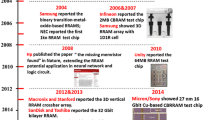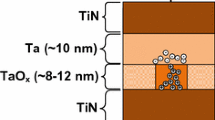Abstract
Activation functions are one of the key parameters in deep neural networks. They help decide the output and its functionality for a given application. In software, variety of activation functions, such as sigmoid, TanH, ReLU, ELU, GeLU, SELU, SiLU/Swish, etc., have been investigated for machine learning applications, whereas the hardware implementation of the activation functions is sub-ordinate in literature. This paper proposes a novel hardware design of swish (self-gated) activation function for analog applications using Resistive Random Access Memory (RRAM). The approximate analog equivalent model of swish circuit helps capture the incremental changes in the output voltage or current. The periodic analysis of the swish equivalent model has been performed on the parameters, such as power, area and total harmonic distortion, at different temperature ranges. The analog hardware design of the swish circuit has been implemented in UMC 180 nm technology node. The simulation results show low power of 498 μW attained for the swish circuit. The area occupied by the swish circuit is 15.12 μm2.






Similar content being viewed by others
References
Goodfellow I, Bengio Y, Courville A. Deep learning. MIT Press, pp198–201. 2016.
Tabarce S, Tavares V, Oliveira P. Programmable analogue VLSI implementation for asymmetric sigmoid neural activation function and its derivative. Electron Lett. 2005;41:863–4. https://doi.org/10.1049/el:20052024.
Ramachandran P, Zoph B, Le QV. Swish: a self-gated activation function. Google Brain. 2017;1–12
Fatima A, Pethe A. NVM device-based deep inference architecture using self-gated activation functions (Swish). In: Bajpai MK, Kumar Singh K, Giakos G. (eds) Machine vision and augmented intelligence—theory and applications. Lecture notes in electrical engineering. 2021;796. Springer, Singapore. https://doi.org/10.1007/978-981-16-5078-9_4.
Chen PY, Yu S. Compact modeling of RRAM devices and its applications in 1T1R and 1S1R array design. IEEE Trans Electron Devices. 2015;62(12):4022–8.
International Roadmap for Devices and Systems, “Beyond CMOS”, IEEE, 2020 [Online] Available: https://irds.ieee.org/editions/2020/beyond-cmos
Burr GW, Shelby RM, Sebastian A, Kim S, Kim S, Sidler S, Virwani K, Ishii M, Narayanan P, Fumarola A, Sanches LL, Boybat I, Le Gallo M, Moon K, Woo J, Hwang H, Leblebici Y. Neuromorphic computing using non-volatile memory. Adv Phys X. 2017;2(1):89–124.
Yu S. Neuro-inspired computing with emerging nonvolatile memory. IEEE. 2018;106(2):260–85.
Rajendran B, Alibart F. Neuromorphic computing based on emerging memory technologies. IEEE J Emerg Select Top Circ Syst. 2016;6(2):198–211.
Yu S, Sun X, Peng X, Huang S. Compute-in-memory with emerging non-volatile memories: challenges and prospects. In: IEEE Custom Integrated Circuits Conference (CICC), Boston, MA, USA, pp. 1–4, 23, 2020.
Chou C, et al. An N40 256K×44 embedded RRAM macro with SL-precharge SA and low-voltage current limiter to improve read and write performance. In: IEEE International Solid–State Circuits Conference—(ISSCC), San Francisco, CA, pp. 478–480, 2018.
Hyungjun K, Taesu K, Jinseok K, Jae-Joon K. Deep neural network optimized to resistive memory with nonlinear current–voltage characteristics. J Emerg Technol Comput Syst. 2018. https://doi.org/10.1145/3145478.
Kuzum D, Yu S, Wong H-SP. Synaptic electronics: materials, devices and applications. IOP Sci Nanotechnol. 2013;24(38).
Sepp H, Jurgen S. Long short-term memory. Neural Comput. 1997;9(8):1735–80.
Rupesh KS, Klaus G, Jurgen S. Highway networks. arXiv preprint. https://arxiv.org/abs/1505.00387, 2015.
Xavier G, Antoine B, Yoshua B. Deep sparse rectifier neural networks. In: Proceedings of the Fourteenth International Conference on Artificial Intelligence and Statistics, pp. 315–323, 2011.
Stephen AB, Markus M. Fast and slow contrast adaptation in retinal circuitry. Neuron. 2002;36(5):909–19.
Real E, Asari H, Gollisch T, Meister M. Neural circuit inference from function to structure. Curr Biol. 2017;27(2):189–98.
Yeo I, Gi S, Lee B, Chu M. Stochastic implementation of the activation function for artificial neural networks. In: 2016 IEEE Biomedical Circuits and Systems Conference (BioCAS), Shanghai, China, pp. 440–443, 2016. https://doi.org/10.1109/BioCAS.2016.7833826.
Ito Y. Approximation of functions on a compact set by finite sums of a sigmoid function without scaling. Neural Netw. 1991;4(6):817–26.
Wang Z. A four-transistor four-quadrant analog multiplier using MOS transistors operating in the saturation region. IEEE Trans Instrum Meas. 1993;42(1):75–7. https://doi.org/10.1109/19.206689.
Analog Devices. Analog Multipliers, Datasheet: MT-079 Tutorial, [Online], Available: https://www.analog.com/media/en/training-seminars/tutorials/MT-079.pdf
Behzad R. Fundamentals of microelectronics. Hoboken: Wiley; 2014.
Liu S, Nagel LW. Small-signal MOSFET models for analog circuit design. IEEE J Sol State Circ. 1982;17(6):983–98. https://doi.org/10.1109/JSSC.1982.1051852.
Al-Ruwaihi KM. CMOS analogue neurone circuit with programmable activation functions utilising MOS transistors with optimised process/device parameters. 1997;144(6): 318–322
Gunhee H, Sanchez-Sinencio E. CMOS transconductance multipliers: a tutorial. In: IEEE Transactions on Circuits and Systems II: Analog and Digital Signal Processing, vol. 45, no. 12, pp. 1550–1563, 1998. https://doi.org/10.1109/82.746667.
Wang S-J, Lee J-Y, Chang C-Y. An efficient and reliable approach for semiconductor device parameter extraction. IEEE Trans Comput Aided Des Integr Circuits Syst. 1986;5(1):170–9. https://doi.org/10.1109/TCAD.1986.1270184.
Binkley DM. Tradeoffs and optimization in analog CMOS design. In: 2007 14th International Conference on Mixed Design of Integrated Circuits and Systems, Ciechocinek, Poland, pp. 47–60, 2007. https://doi.org/10.1109/MIXDES.2007.4286119.
Nicholas gerard timmons, andrew rice, approximating activation functions. http://arxiv.org/abs/2001.06370, 17 Jan 2020.
Roman-Loera A, Veerabathini A, Flores-Oropeza LA, Ramirez-Angulo J. A high-frequency small-signal model for four-port network MOSFETs. In: 2020 IEEE 63rd International Midwest Symposium on Circuits and Systems (MWSCAS), Springfield, MA, USA, pp. 53–56, 2020. https://doi.org/10.1109/MWSCAS48704.2020.9184475.
Author information
Authors and Affiliations
Corresponding author
Ethics declarations
Conflict of Interest
On behalf of all authors, the corresponding author states that there is no conflict of interest.
Additional information
Publisher's Note
Springer Nature remains neutral with regard to jurisdictional claims in published maps and institutional affiliations.
This article is part of the topical collection “Advances in Machine Vision and Augmented Intelligence” guest edited by Manish Kumar Bajpai, Ranjeet Kumar, Koushlendra Kumar Singh and George Giakos.
Rights and permissions
About this article
Cite this article
Fatima, A., Pethe, A. Periodic Analysis of Resistive Random Access Memory (RRAM)-Based Swish Activation Function. SN COMPUT. SCI. 3, 202 (2022). https://doi.org/10.1007/s42979-022-01059-3
Received:
Accepted:
Published:
DOI: https://doi.org/10.1007/s42979-022-01059-3




